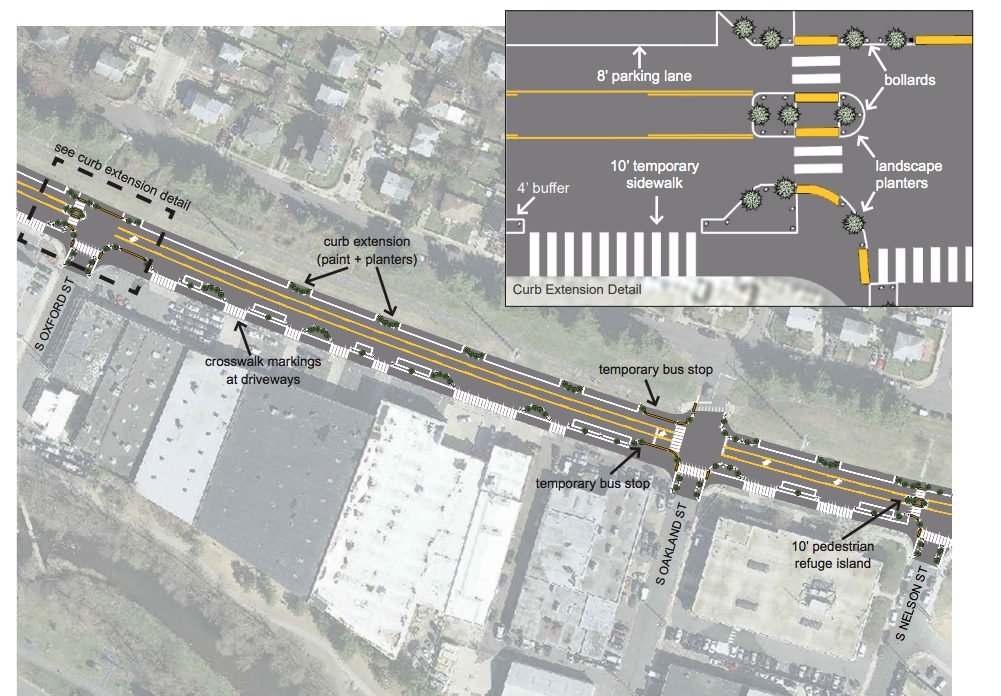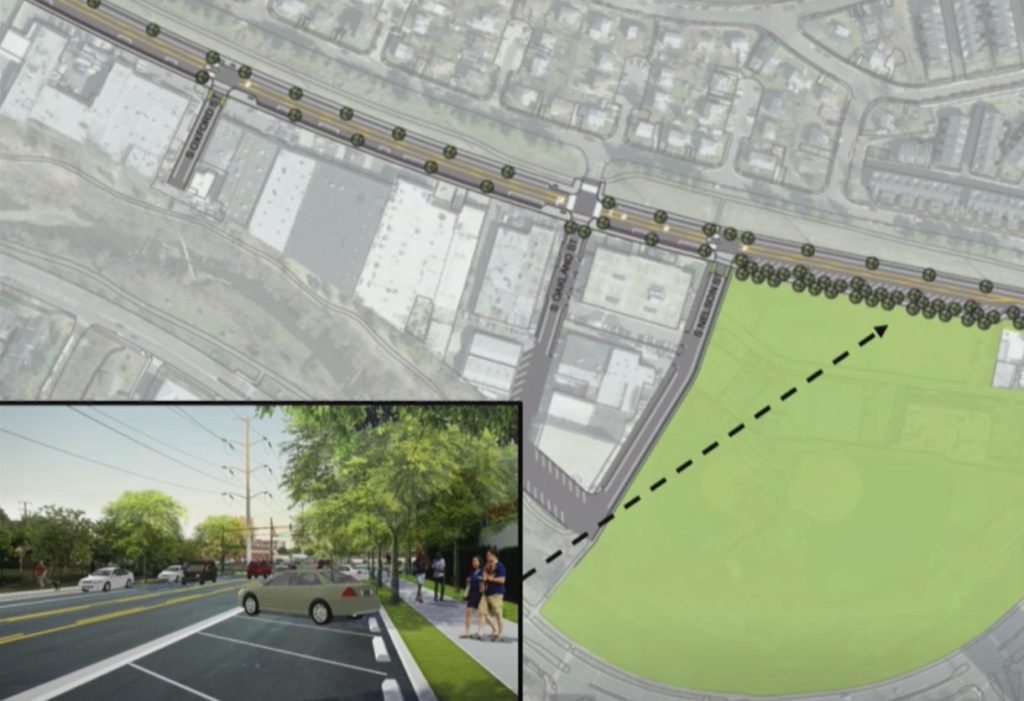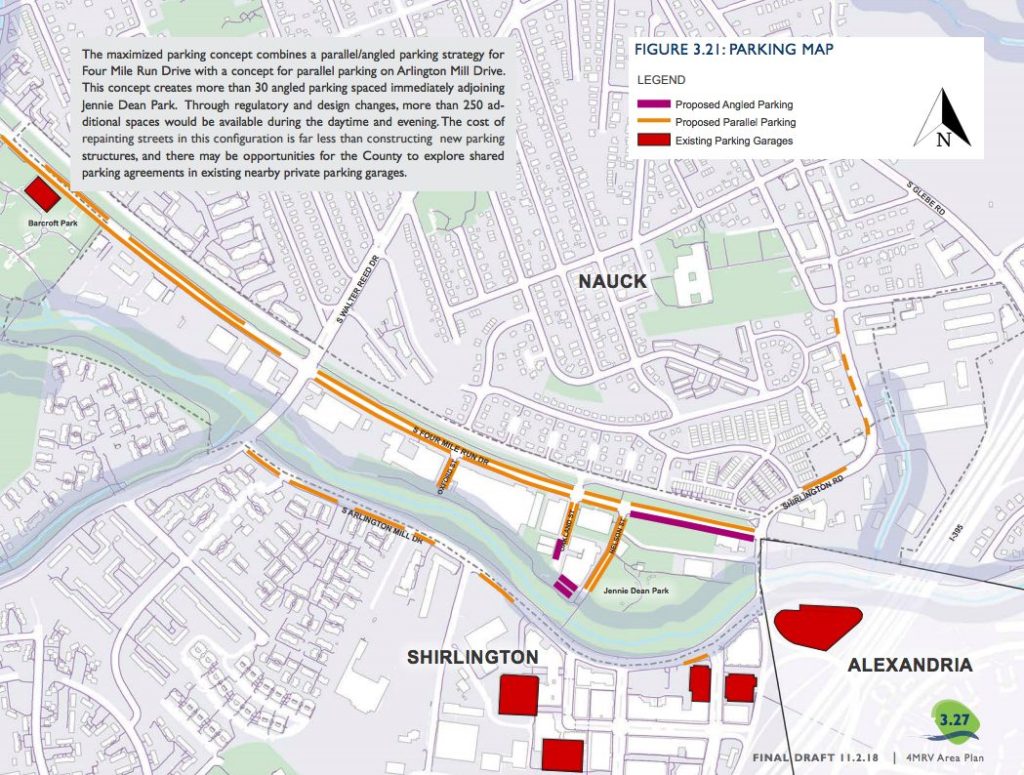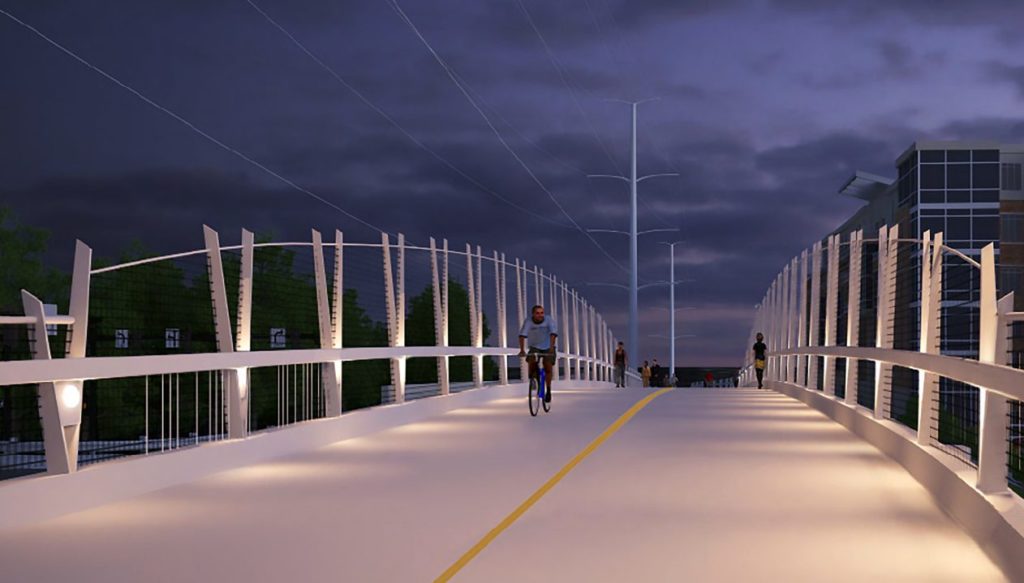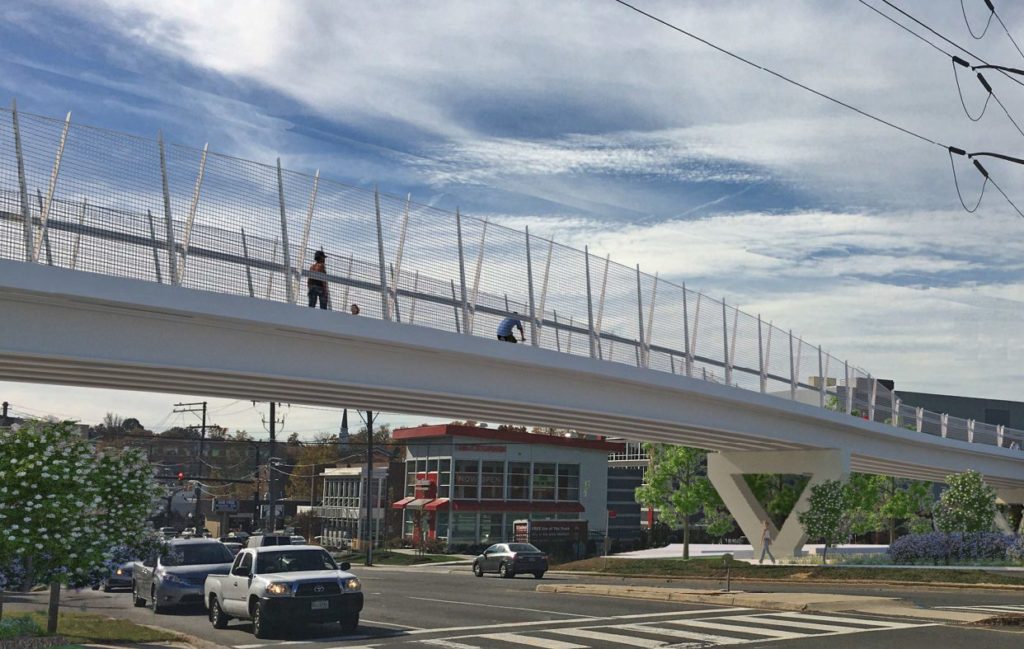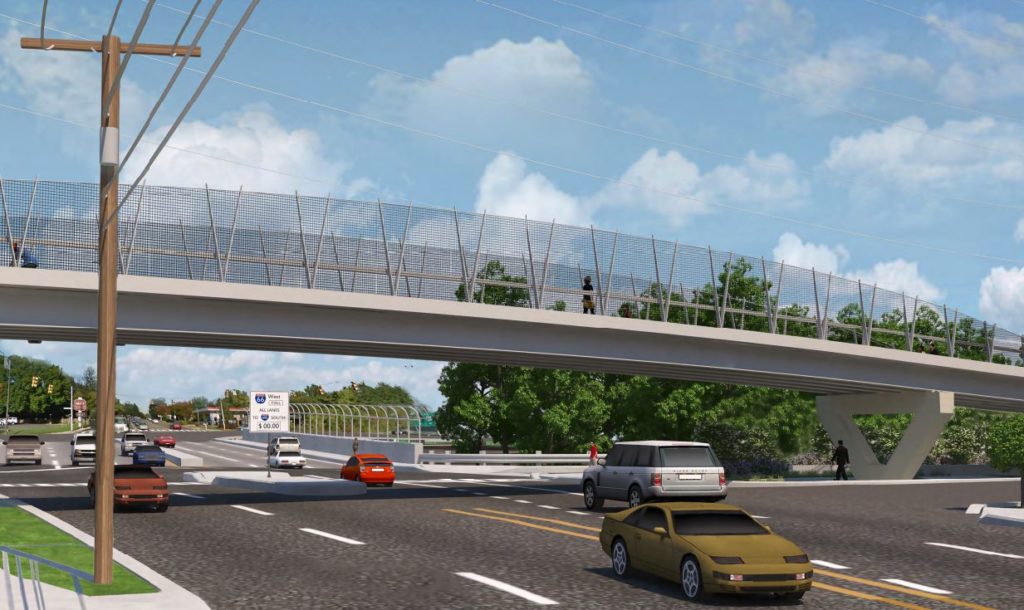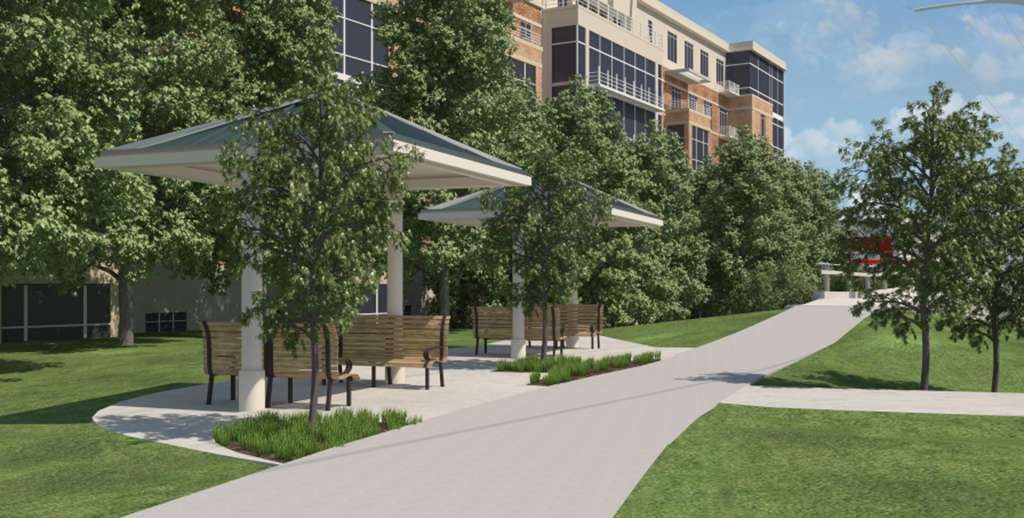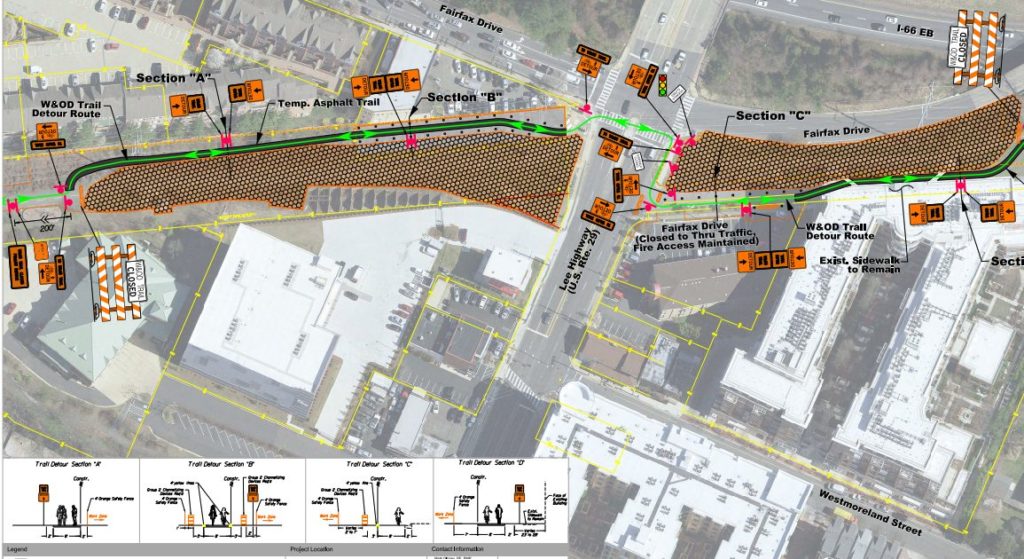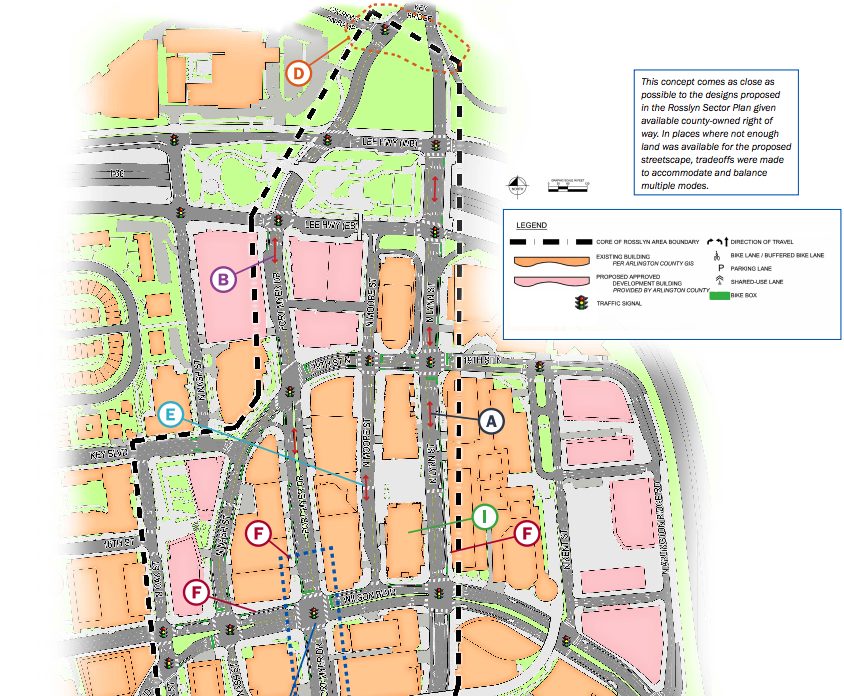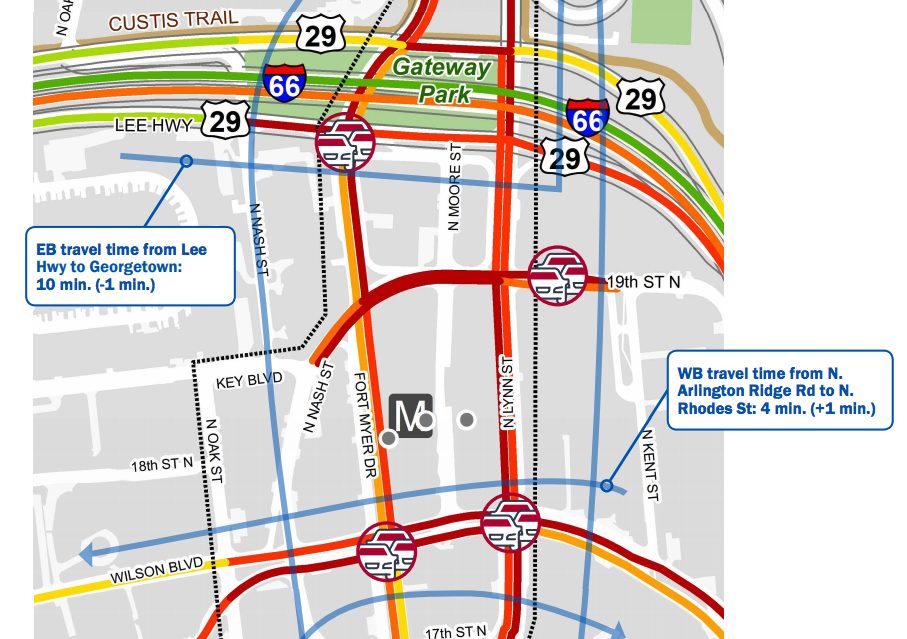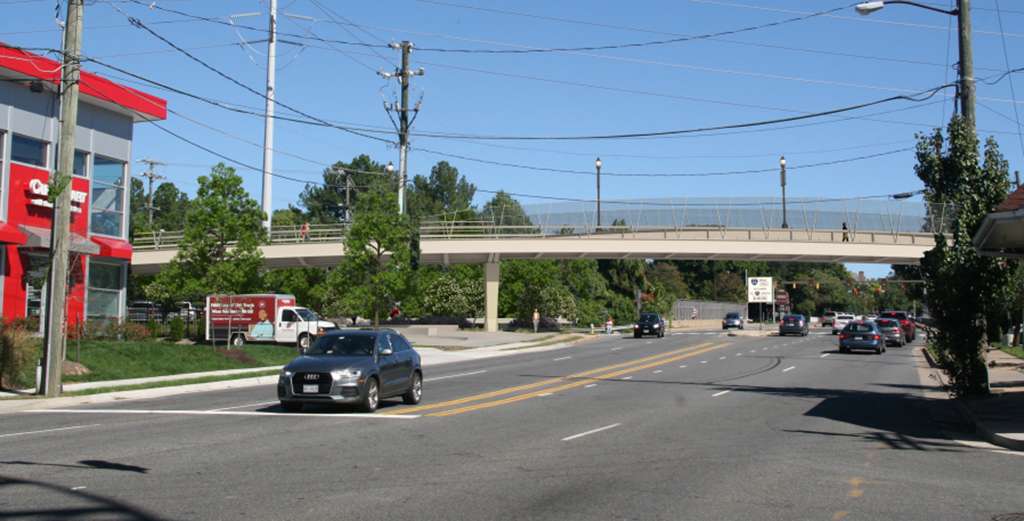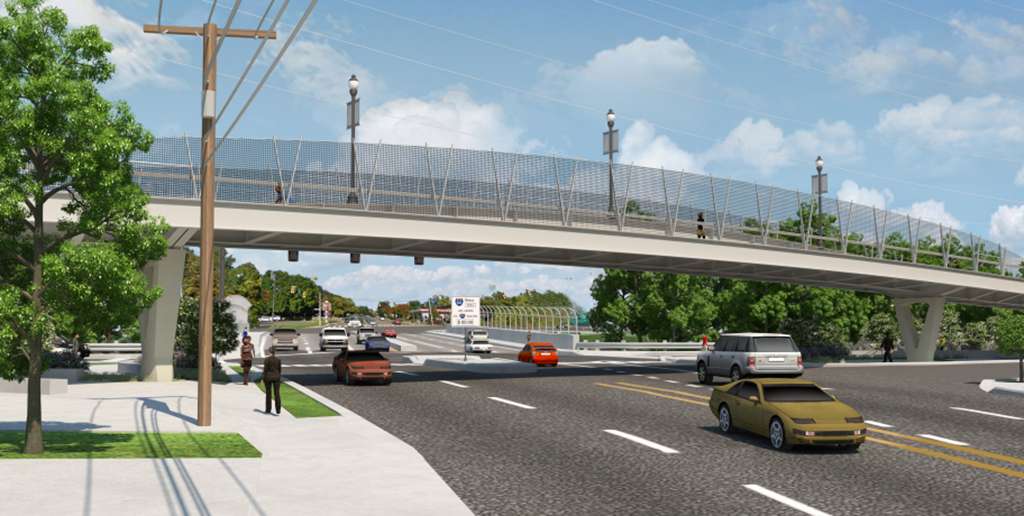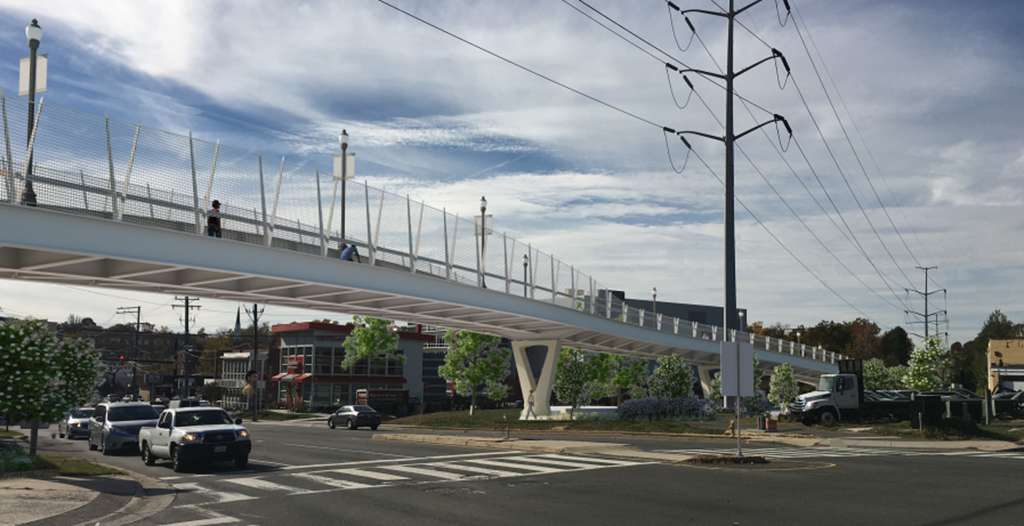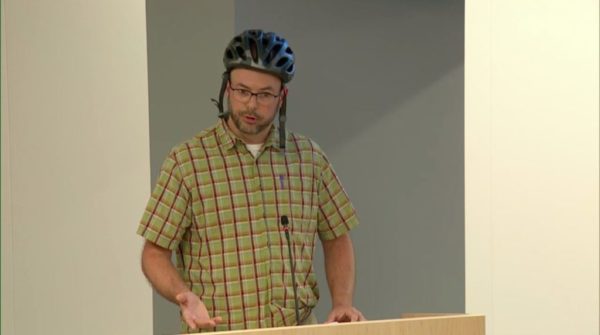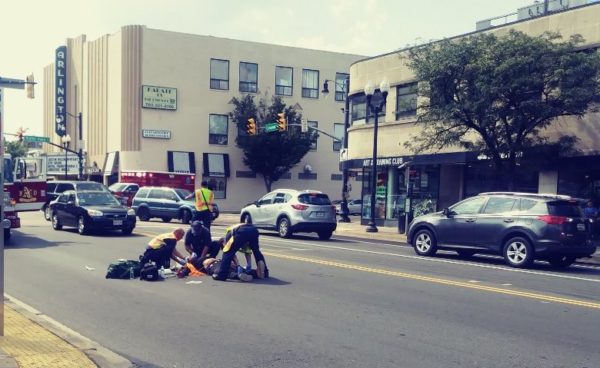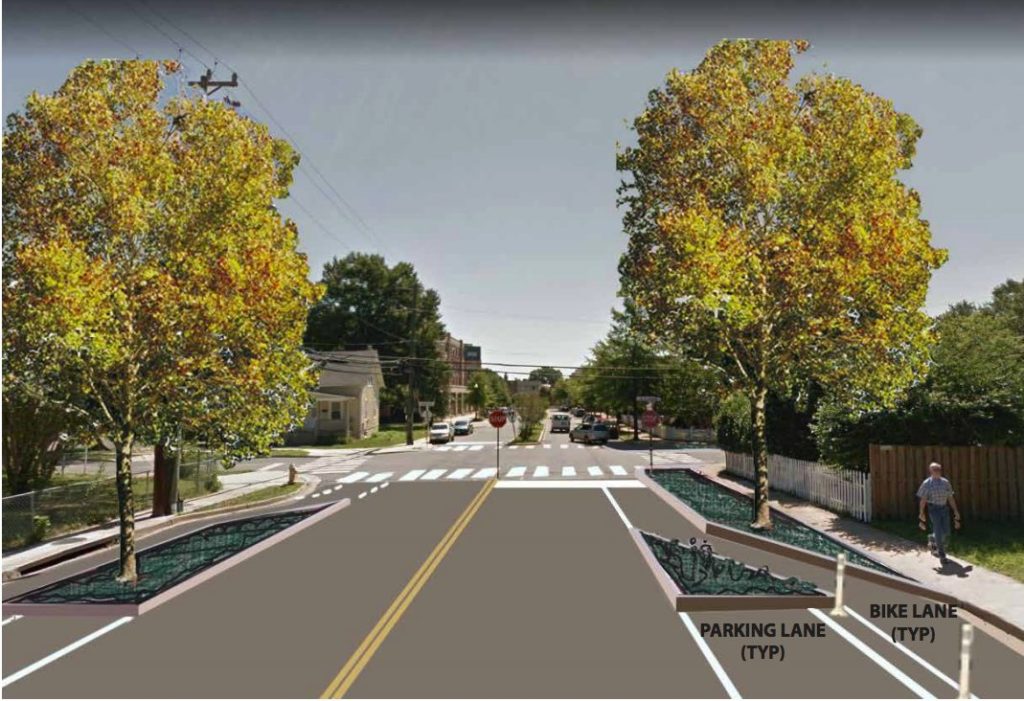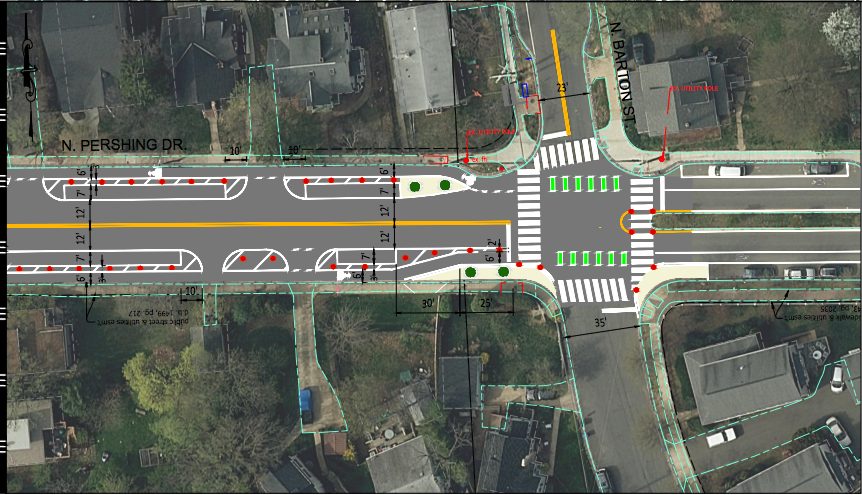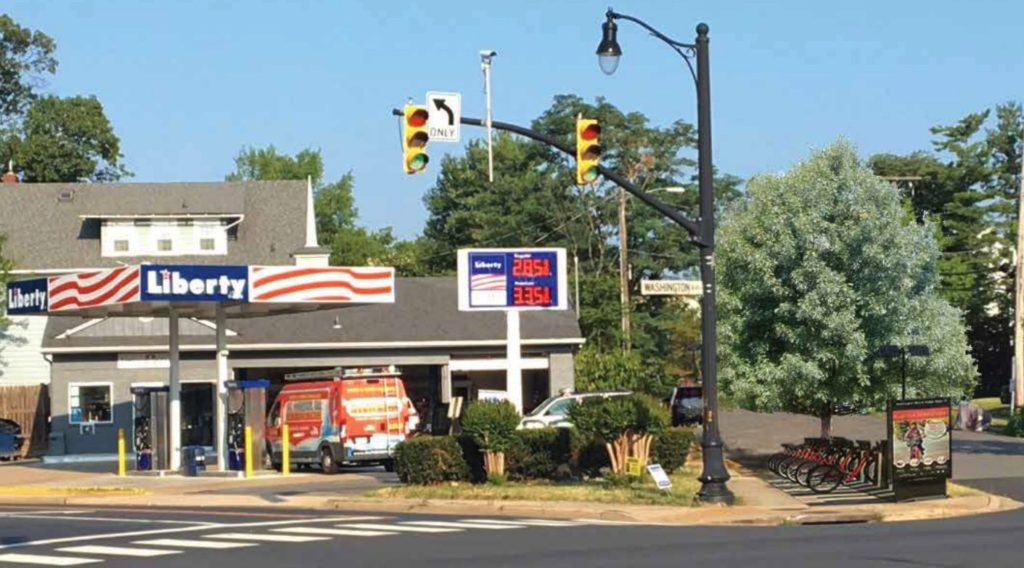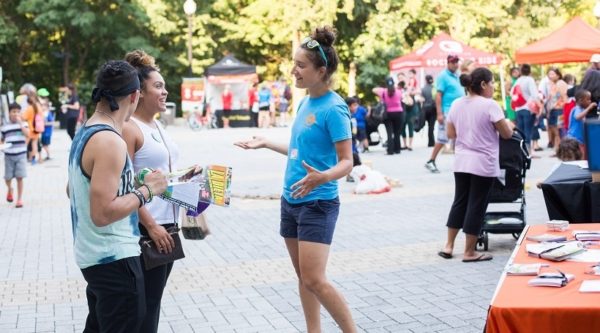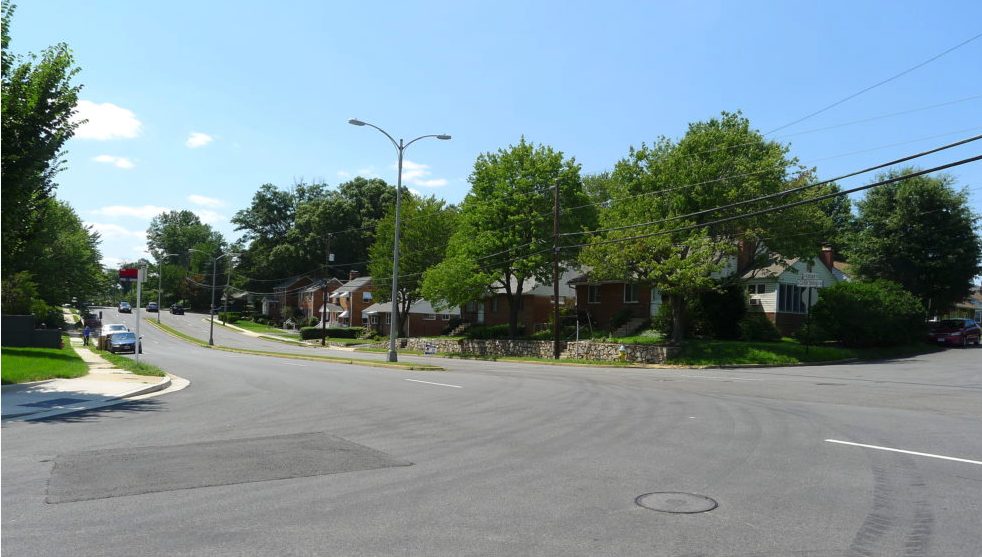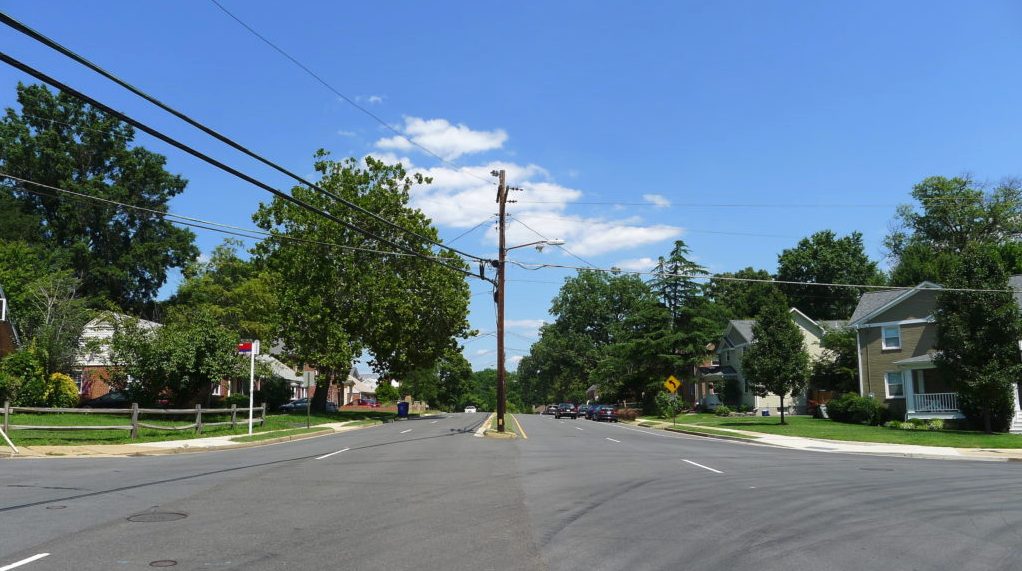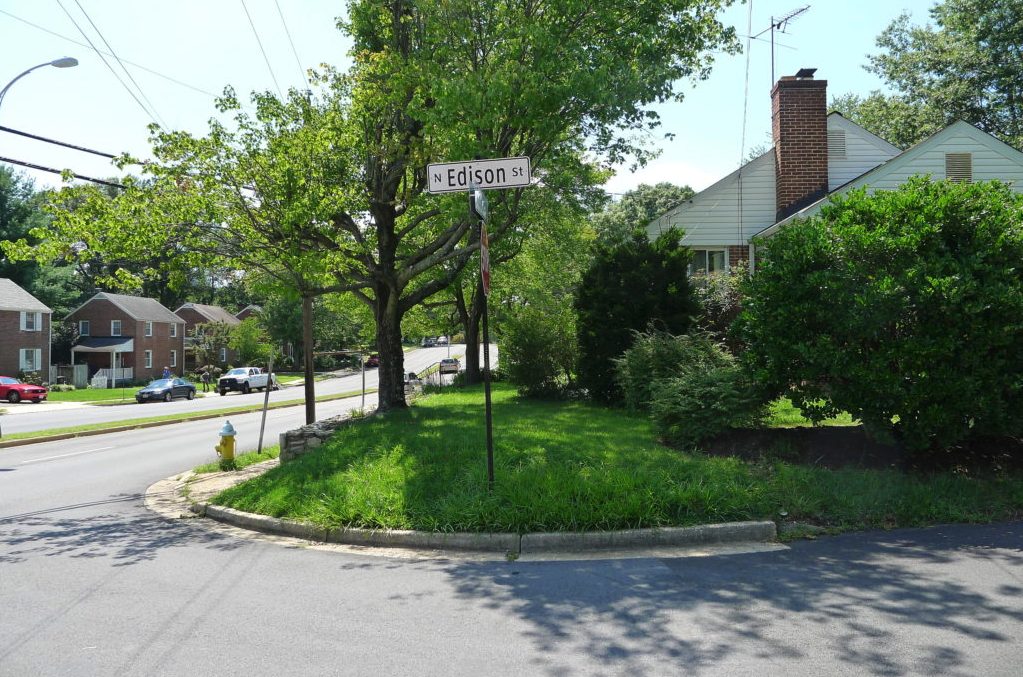Though the biggest changes to the Four Mile Run Valley and its parks are still a few years out, Arlington officials are gearing up to make a few road changes in the area before major construction starts.
The county is planning some interim parking tweaks to free up space primarily along S. Four Mile Run Drive as it approaches Jennie Dean Park, in a bid to prepare for more substantial pedestrian and parking changes as the area evolves in the future. Officials are convening a community meeting to discuss the temporary changes tonight (Monday) at the Charles Drew Community Center (3500 23rd Street S.), starting at 7:30 p.m.
The affected roads up for discussion include:
- S. Four Mile Run Drive major between Walter Reed Drive and Shirlington Road
- S. Four Mile Run Drive minor west of Shirlington Road
- S. Oxford Street south of S. Four Mile Run Drive
- S. Oakland Street south of S. Four Mile Run Drive
- S. Nelson Street south of S. Four Mile Run Drive
- 27th Street S. between Shirlington Road to S. Nelson Street
According to the county’s website, “the changes are designed to provide better access for residents, park users and businesses in the area,” and are included as part of the long-range planning documents the County Board is currently finalizing for the Four Mile Run Valley.
The 4MRV Area Plan, set to be considered by the Planning Commission on Wednesday (Nov. 7), calls for a full “reconfiguration” of S. Four Mile Run Drive, in order for the county to test out some changes to make the area a bit more pedestrian-friendly and free up parking around Jennie Dean Park. Additions will primarily include “paint, bollards and landscaped planters,” according to the draft document.
“This would create a temporary 10-foot sidewalk on the south side of the street, a pedestrian crossing island at the intersections of Nelson and Oxford streets, and curb extensions (with planters) along the corridor,” the plan says. “Parking lanes would still be provided on both sides of the street. This interim solution would allow the county to pilot the new street design and collect input/data on vehicle speeds and delay, pedestrian comfort, safety and access to businesses.”
As an example, the planning document points to the intersection of S. Arlington Mill Drive and S. Walter Reed Drive, where the county is currently working on curb extensions and crosswalks to make the area more hospitable to cyclists and walkers alike.
The county anticipates that the interim changes will get set up this winter. County planner Richard Tucker even told the Transportation Commission last Thursday (Nov. 1) that some could be in place, “in the next several weeks,” so long as Monday’s meeting goes smoothly.
In the longer term, the area plan calls for “a parallel/angled parking strategy for Four Mile Run Drive with a concept for parallel parking on Arlington Mill Drive,” freeing up a bit more parking in an area that’s frequently in high demand.
“This concept creates more than 30 angled parking spaced immediately adjoining Jennie Dean Park,” the plan says. “Through regulatory and design changes, more than 250 additional spaces would be available during the daytime and evening. The cost of repainting streets in this configuration is far less than constructing new parking structures, and there may be opportunities for the county to explore shared parking agreements in existing nearby private parking garages.”


